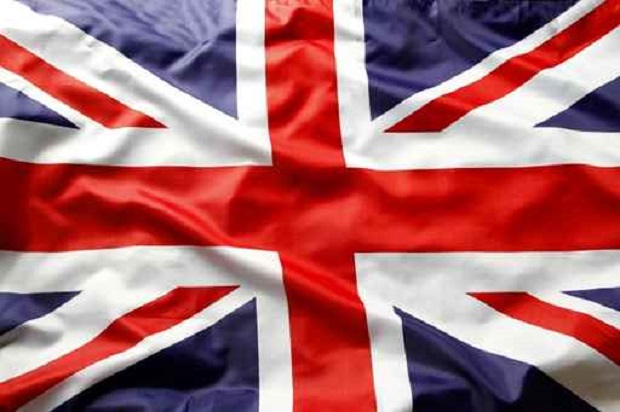Top ten best British tech inventions
From the computer to the World Wide Web, the iPod to the typewriter, a lot of modern technology started out in the UK


7) ARM chips
Almost every smartphone and tablet today is powered by an ARM chip, and older, more basic chips are used as controllers in everything from cables to disposable, vibrating razors.
Originally designed in the 1980s by Acorn Computers to power the next generation of their personal computers (first as a coprocessor for the BBC Micro and then as the CPU for the 1987 Archimedes), ARM stood for Acorn RISC Machine. With a reduced instruction set, many registers for storing intermediate results of instructions, far fewer transistors than the competition and an emphasis on low latency, the ARM team produced a processor that was both powerful and low on power. Other RISC chip manufacturers concentrated on UNIX workstations; ARM worked with Apple and DEC to design chips for mobile devices like the Newton. The fact that ARM licences the design of its chips rather than manufacturing them all in-house also makes them attractive; companies can use the whole design or customise it.
8) Music in stereo
Alan Blumlein was a prolific engineer. Not only did he create the long-tailed pair switched valve (a key component of early computers), the aerial used to broadcast Queen Elizabeth II's coronation in 1937, the 405-line TV system used in the UK for decades, key developments in airborne radar and over 128 patents, but in 1931 he patented the fundamentals of stereophonic recording and playback and surround sound.
Irritated by watching movies at the cinema where the voice of an actor on one side of the screen came out of the speaker on the other side of the room, he devised a way to have the sound move with the actor, using only two speakers. The equipment he designed made some of the first stereo recordings at EMI's Abbey Road studio and in 1935 he cut the first stereo records. Without stereo music, you'd only need one side of your headphones.
9) The iPod
The Rio might have been one of the first digital music players, but when Apple needed to fight off a lawsuit from Burst.com over streaming audio patents they turned to British inventor Kane Kramer who patented a digital audio player in 1981 that looks rather familiar.
The IXI had a screen and navigation controls on the front; it only stored three and a half minutes of music but it could get more from a "central data bank" (http://kanekramer.com/downloads/IXI-Report.pdf) where record labels would upload digital music.
In other words, he also came up with the idea of the iTunes store. Kramer was ahead of his time. However, although he built and shipped his player, he couldn't get enough sales, funding or content and the patents lapsed. It wasn't until flash memory, 2" hard drives and broadband downloads came along that portable digital music became ubiquitous.
10) Geo-stationary satellites
In 1945, British science fiction author Arthur C Clarke suggested putting "artificial satellites" in orbit over the equator where they would "remain stationary above the same spot". With three repeater stations in orbit you "could give television and microwave coverage to the entire planet".
Because the satellite always seems to be in the same position in the sky, the satellite antenna that sends and receives information doesn't have to move. The first geostationary satellite launched in 1964 to broadcast the 1964 summer Olympics; by the year 2000 there were over a hundred communications satellite in orbit, used for television, telephone calls, radio and internet access.
Fibre optic cables have lower latency so they're better for fast connections, but putting satellites in orbit means you get coverage almost everywhere in the world without digging trenches or laying cables on the sea bed, so they're a key part of our insatiable demand for information and communication.
Get the ITPro daily newsletter
Sign up today and you will receive a free copy of our Future Focus 2025 report - the leading guidance on AI, cybersecurity and other IT challenges as per 700+ senior executives
Mary is a freelance business technology journalist who has written for the likes of ITPro, CIO, ZDNet, TechRepublic, The New Stack, The Register, and many other online titles, as well as national publications like the Guardian and Financial Times. She has also held editor positions at AOL’s online technology channel, PC Plus, IT Expert, and Program Now. In her career spanning more than three decades, the Oxford University-educated journalist has seen and covered the development of the technology industry through many of its most significant stages.
Mary has experience in almost all areas of technology but specialises in all things Microsoft and has written two books on Windows 8. She also has extensive expertise in consumer hardware and cloud services - mobile phones to mainframes. Aside from reporting on the latest technology news and trends, and developing whitepapers for a range of industry clients, Mary also writes short technology mysteries and publishes them through Amazon.
-
 Should AI PCs be part of your next hardware refresh?
Should AI PCs be part of your next hardware refresh?AI PCs are fast becoming a business staple and a surefire way to future-proof your business
By Bobby Hellard
-
 Westcon-Comstor and Vectra AI launch brace of new channel initiatives
Westcon-Comstor and Vectra AI launch brace of new channel initiativesNews Westcon-Comstor and Vectra AI have announced the launch of two new channel growth initiatives focused on the managed security service provider (MSSP) space and AWS Marketplace.
By Daniel Todd